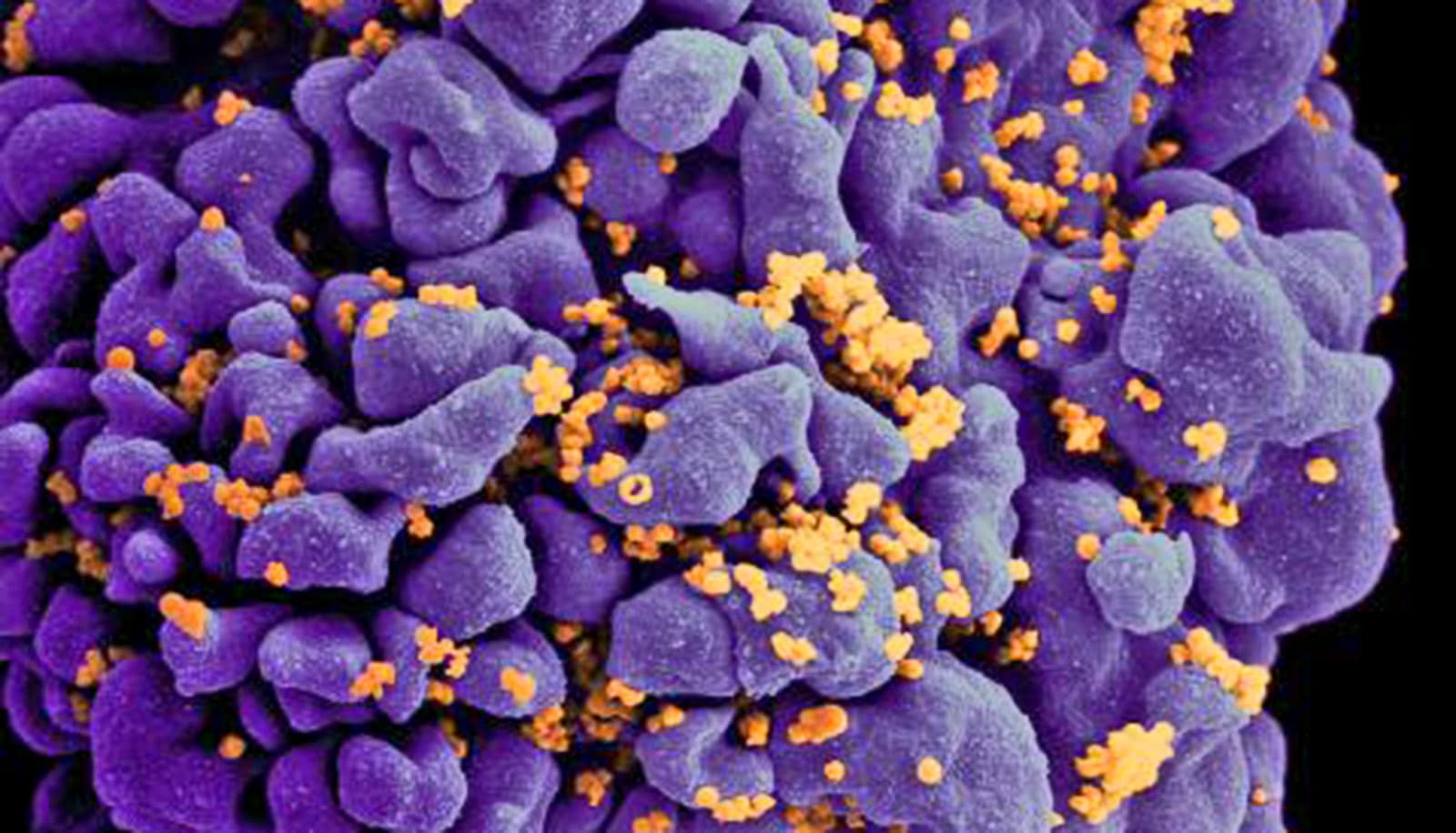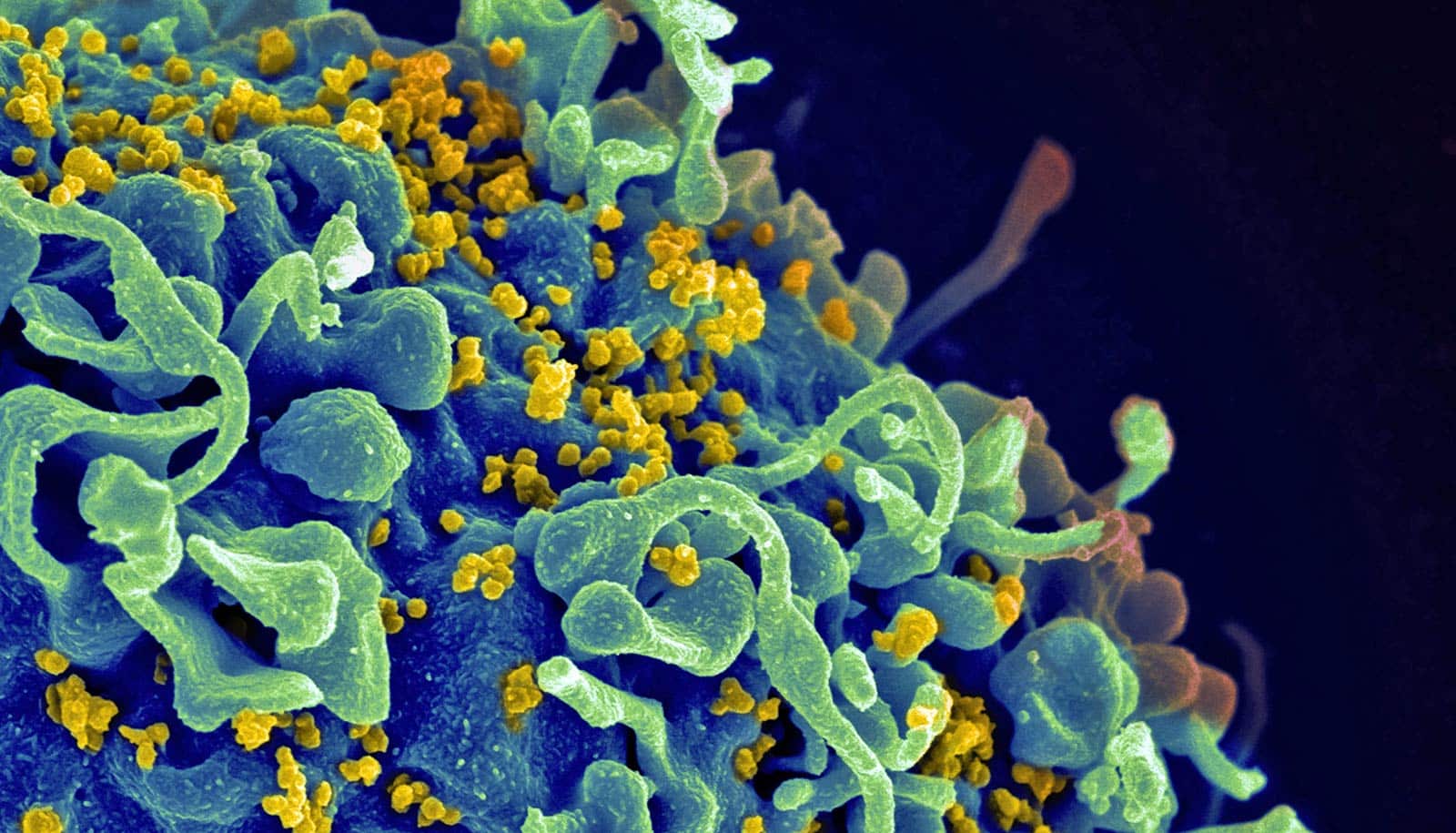New research indicates that carefully designed cocktails of broadly neutralizing antibodies, or bNAbs, could help treat HIV while minimizing the risk of the virus evolving to “escape” treatment.
The study shows that computational approaches to selecting combinations of bNAbs based on viral genetics could help prevent viral escape, making HIV treatment more effective.
“Our study shows that leveraging genetic data can help us design more effective HIV therapies,” says senior author Armita Nourmohammad, an assistant professor of physics at the University of Washington. “Our approach may also be useful for designing therapies against other rapidly evolving agents that cause disease, such as the Hepatitis C virus, drug-resistant bacteria, or cancer tumor cells.”
Antibodies are a class of proteins made by the immune system to recognize and fight pathogens. In HIV infections, bNAbs are a specific subset of antibodies that recognize multiple strains of HIV.
Broadly neutralizing antibodies offer a promising new tool to treat or potentially cure infections with rapidly evolving viruses such as HIV. But clinical trials using a single bNAb to treat HIV have shown that some viral strains may survive the treatment and lead to a rebound of viruses in the blood. Combinations of bNAbs may therefore be a more effective approach, but finding the best combinations is a challenge.
“For our study, we proposed using a computational approach to predict the effectiveness of bNAb combinations based on the HIV genetics,” says lead author Colin LaMont, a researcher at the Max Planck Institute for Dynamics and Self-Organization in Germany.
The team used high-throughput DNA sequencing to analyze the genomes of HIV viruses collected over 10 years from 11 untreated patients with HIV. They used these data to predict which viral strains might be able to escape treatment with different bNAbs and whether evolving to dodge bNAbs was associated with a survival cost.
Next, using computational methods, they applied the knowledge gained to predict viral rebounds in three real-life trials using bNAbs. Finally, the team used their computational approach to develop a combination of bNAbs that is least likely to allow any virus to escape.
In the process, they discovered reasons why some bNAbs target broader populations of HIV than others. For example, some bNAbs, such as one called 10-1074, perform better against diverse populations of viruses because mutations that allow viruses to escape from 10-1074 also make those viruses less likely to survive. Others bNAbs, including one called PGT121, are more effective against viral populations with lower genetic diversity because mutations that enable escape are rare. Overall, the results suggested that the optimal combination includes three bNAbs: PG9, PGT151, and VRC01.
“We’ve shown the combination of PG9, PGT151, and VRC01 reduces the chance of viral rebound to less than 1%,” says LaMont. “It does this by targeting three different regions of the virus’ protective outer wrapping, or envelope.”
“Combining bNAbs, administered via intravenous infusion every few months, with current antiretroviral therapies that require daily doses could further improve long-term HIV treatment success,” says Nourmohammad.
Antiretroviral therapy reduces the ability of HIV to multiply and create new variants, limiting the genetic diversity of the viral population and lowering the likelihood for emergence of bNAb escape variants. The authors say that future studies are needed to confirm the potential benefits of combining antiretroviral therapy and broadly neutralizing antibodies.
The study appears in the journal eLife. Additional coauthors are from the Max Planck Institute for Dynamics and Self-Organization and the University of Cologne in Germany.
Funding for the research came from the National Science Foundation, the German Research Foundation, and the Max Planck Institute for Dynamics and Self-Organization.
Source: University of Washington



